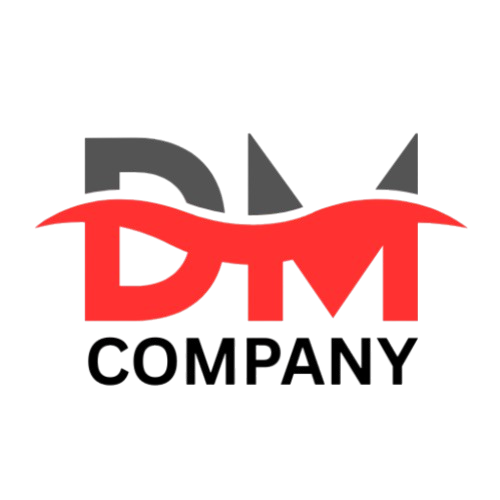In today’s fast-paced, digitally dominated world, it’s easy to assume that print Blending Print and Digital Marketing: Today’s Best Strategies for Maximum Impact is a thing of the past. However, businesses that truly understand the power of multi-channel marketing know that combining print and digital strategies can offer outstanding results. This integrated approach connects with audiences on multiple levels, boosts brand visibility, and drives better engagement and conversions.
Let’s explore how today’s businesses are successfully integrating print and digital marketing — and how you can do the same.
Blending Print and Digital Marketing
Blending Print and Digital Marketing: Today’s Best Strategies for Maximum Impact offers speed, precision, and massive reach. On the other hand, print materials provide a tangible, lasting impression that often feels more trustworthy. By combining both, marketers can:
- Strengthen brand recall
- Enhance customer trust
- Increase response rates
- Reach different demographics
- Create a seamless customer experience
In short, the integration creates a more comprehensive marketing ecosystem.
Use QR Codes on Print Materials
One of the most effective and simple ways to bridge print and digital is by using QR codes. These allow people to scan a printed flyer, brochure, or ad with their smartphone and be instantly taken to:
- A product page
- A video demonstration
- A registration form
- Your social media profile
- A landing page with a special offer
Modern QR codes are customizable, trackable, and brand-friendly, making them an ideal connector between print and Blending Print and Digital Marketing: Today’s Best Strategies for Maximum Impact .
Personalized URLs (PURLs)
PURLs are unique web addresses tailored for each recipient. When used in direct mail campaigns, they give users a sense of exclusivity and personalization.
When someone receives a printed piece with their personalized link, they’re more likely to engage. On the backend, marketers can track who visited, what actions they took, and adjust follow-ups accordingly.
Social Media Handles on Print Ads
It sounds obvious, but many businesses still forget to include their social media handles or hashtags on print materials. Encouraging people to follow, tag, or share your brand online builds organic digital engagement.
For example:
“Share a photo of this postcard with #YourBrandContest for a chance to win!”
This kind of cross-promotion builds brand community and extends the reach of your offline efforts.
Retargeting Print Responders Online
When someone interacts with your print campaign — for example, scans a QR code or visits a PURL — you can capture that data and retarget them online. Using cookies or pixel tracking, your ads can follow them on platforms like Facebook, Google, and Instagram.
This seamless shift from print to digital ensures no lead is lost and keeps your brand top of mind.
Interactive Print: AR and NFC
Thanks to technology like Augmented Reality (AR) and Near Field Communication (NFC), print can now be highly interactive.
- AR: A printed image comes alive when viewed through a smartphone app, showing videos, 3D models, or interactive experiences.
- NFC: Just like tapping your card for payment, users can tap a printed item (like a business card) with their phone and instantly access content or offers.
These innovations make print materials feel futuristic and can massively increase user engagement.
Consistent Branding Across Channels
Integrating doesn’t just mean connecting — it also means branding consistency. Your colors, fonts, messages, and tone should feel the same whether someone is:
- Reading your printed brochure
- Visiting your website
- Seeing a social media ad
- Opening your newsletter
Unified branding boosts recognition, trust, and loyalty. Always treat print and digital as complementary parts of one brand story.
Print-to-Digital Coupons and Offers
Print coupons still work. But when you tie them to digital redemption, you get both offline engagement and online tracking. For example:
- Print a code that can be redeemed only on your website
- Offer discounts through printed catalogues that lead to your e-commerce platform
This drives offline readers to become online customers — and gives you valuable data in return.
Trackable Phone Numbers and Campaign Codes
Use unique phone numbers, discount codes, or tracking codes on each print piece. This allows you to analyze what version of a printed campaign is performing best, and tie those results to your online efforts.
Email and Direct Mail Integratio
Email and direct mail can work beautifully together. For example:
- Send a direct mail teaser and follow up with a detailed email
- Offer a printed catalog and prompt users to subscribe online for a digital version
- Use print to reactivate cold email leads who haven’t opened messages in a while
Each channel reinforces the other.
Cross-Platform Analytics
Finally, integrate your analytics. Tools like Google Analytics, UTM codes, CRMs, and marketing automation platforms can track cross-channel behavior. When you know what part of your audience interacts with both print and digital, you can fine-tune future campaigns and maximize ROI.
Case Study: A Real-LifeBlending Print and Digital Marketing Integration Success
A real estate agency in Lahore combined print flyers with QR codes linking to 360-degree virtual property tours. Prospects who scanned the code were retargeted on Facebook with property listings. The result? A 60% increase in qualified leads and a 30% higher conversion rate compared to their digital-only campaign the previous year.
Conclusio
In today’s marketing landscape, integration is no longer optional — it’s essential. While digital dominates in speed and reach, print still holds power in its personal, tangible nature. When you merge the two with smart strategies, you create stronger customer journeys, deeper engagement, and ultimately, better business outcomes.
Don’t think print vs. digital — think print + digital.
FAQs
1. Is print marketing still effective in 2025?
Yes. Print is still highly effective, especially when combined with digital strategies. It offers a personal touch and higher trust levels.
2. What industries benefit most from print and digital integration?
Real estate, healthcare, retail, education, and hospitality all benefit greatly. But any industry can use it with the right strategy.
3. How do I track ROI from print campaigns?
Use tools like QR codes, UTM links, unique phone numbers, and coupon codes to measure performance accurately.
4. Are QR codes still relevant today?
Absolutely. With smartphones now having built-in QR scanners, usage has grown rapidly across all age groups.
5. Can I use print to grow my social media following?
Yes. Add your handles, hashtags, and contests on print material to drive engagement and followers.

